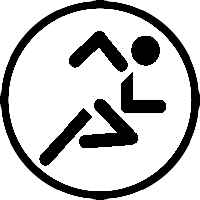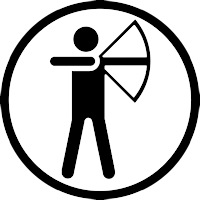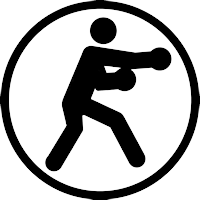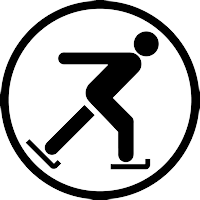"There is a saying, a very old saying: When the pupil is ready the master will appear."
- Zorro, played by Anthony Hopkins, in The Mask of Zorro
Movies in my experience are the worst ways to learn anything. They trivialize the act of training for months or years down to a training montage that lasts less than 4 minutes. Like in the montages below for The Mask of Zorro, Rocky Balboa and Captain America.
Rocky Balboa Training Montage
Captain America Training Montage
Now how many things in the above 3 montage videos did they actually get right?
#1. Attacking in anger is apparently something not to do, and a bit of a trope.
#2. Lots of physically challenging stuff.
#3. Stay aware of your surroundings.
#4. Use brains over brawn - the flagpole exercise in Captain America is actually supposed to be a team building exercise, wherein they form a human ladder to get the flag.
#5. The videos work as motivation inspiration for people who want to exercise / train for a specific sport or activity.
Watching the videos won't make a person a better swordsman, a professional boxer or a super soldier - that much is clear. Most of what you see in the videos are just there for entertainment purposes - designed to look good, funny, impressive, all the while ignoring the long training process it actually took to get there. After all - they can't bore the audience with 3 months worth of footage. They have to boil it down, which is why training montages typically last 3 minutes, the amount of time that a typical audience can watch something without getting bored.
In contrast some TV shows actually get more real exercises into their shows, mostly because of two things: 1. They are not crippled by a 120 minutes of normal film run time and instead have perhaps twenty 44 minute long episodes to work with. 880 minutes means they can get a fair amount of training time in, a little bit in each episode. Take for example the compilation video below from the TV show "Arrow", in which they often mix training scenes with dramatic dialogue in order to convey the idea that the hero is continuously training, and they save time regularly by mixing the training scenes with dialogue. Bonus - Many of the training things, like handstand pushups for example, are actually doable by people looking for a challenge.
There is one issue that many training montages either skip over or pay only lip service to:
The need for an instructor.
Some training montages skip having an instructor entirely, some manage to have one but take more of a "wax on, wax off" approach (as per The Karate Kid franchise), and then wanders off while the student trains alone.
In The Mask of Zorro, we have Don Diego De La Vega, who takes a more hands on approach - but apparently also spends half the time drinking wine and smoking cigars.
In Rocky Balboa he has multiple people helping him train, but they're not really teaching him anything new that he doesn't already know.
In Captain America the instructor is replaced by an army drill sergeant who really spends more time yelling at and insulting his troops rather than teaching them anything.
In Arrow, the hero has multiple different instructors - who all inevitably seem to end up dead, and then he ends up training others.
The "dead instructor" is even a bit of a trope in films, as they often train the hero of the story and often ends up dead either after training the hero, turns out to be the villain and then dies, dies halfway through the story, etc. In films meant for children the instructor is often injured or kidnapped instead of dying, as death is considered to be too much of a downer for kids.
Examples:
Obi Wan in Star Wars, dies after he only partially trains Luke Skywalker.
Yoda in Star Wars, dies after he finishes training Luke Skywalker.
Splinter of the Teenage Mutant Ninja Turtles franchise, is kidnapped during the first film.
It is basically classic storytelling: The master / instructor / teacher is kidnapped / injured / killed and then the hero(es) must go and rescue / avenge their fallen master.
Now in real life, if you get a trainer / instructor, they don't normally die unless it is of old age*. (In which case, if they are that old, why haven't they retired yet?)
They train you, often once per week or maybe several times per week, and the only negative part of this relationship is that they send you a bill for their services once per month roughly.
In conclusion training montages are really only good for motivating yourself to go exercise, train, perhaps even have fun while training - but you aren't going to learn anything truly valuable from them.
Most of the value and wisdom you gain will be from having an instructor, a personal trainer, your own personal Jedi master essentially. So regardless of whether you are hoping to lose weight, train in a sport, or become a superhero - having an instructor certainly helps.
* The example I am thinking of is the case of Awa Kenzo, who kept training people in Kyudo despite becoming old and sick. He probably should have retired, but he kept training his students anyway. There is a story told by his students of how he went for a walk one wintry day with several of his students and they noticed he was dripping blood in the snow. He responded by saying:
"This too, is training."









































